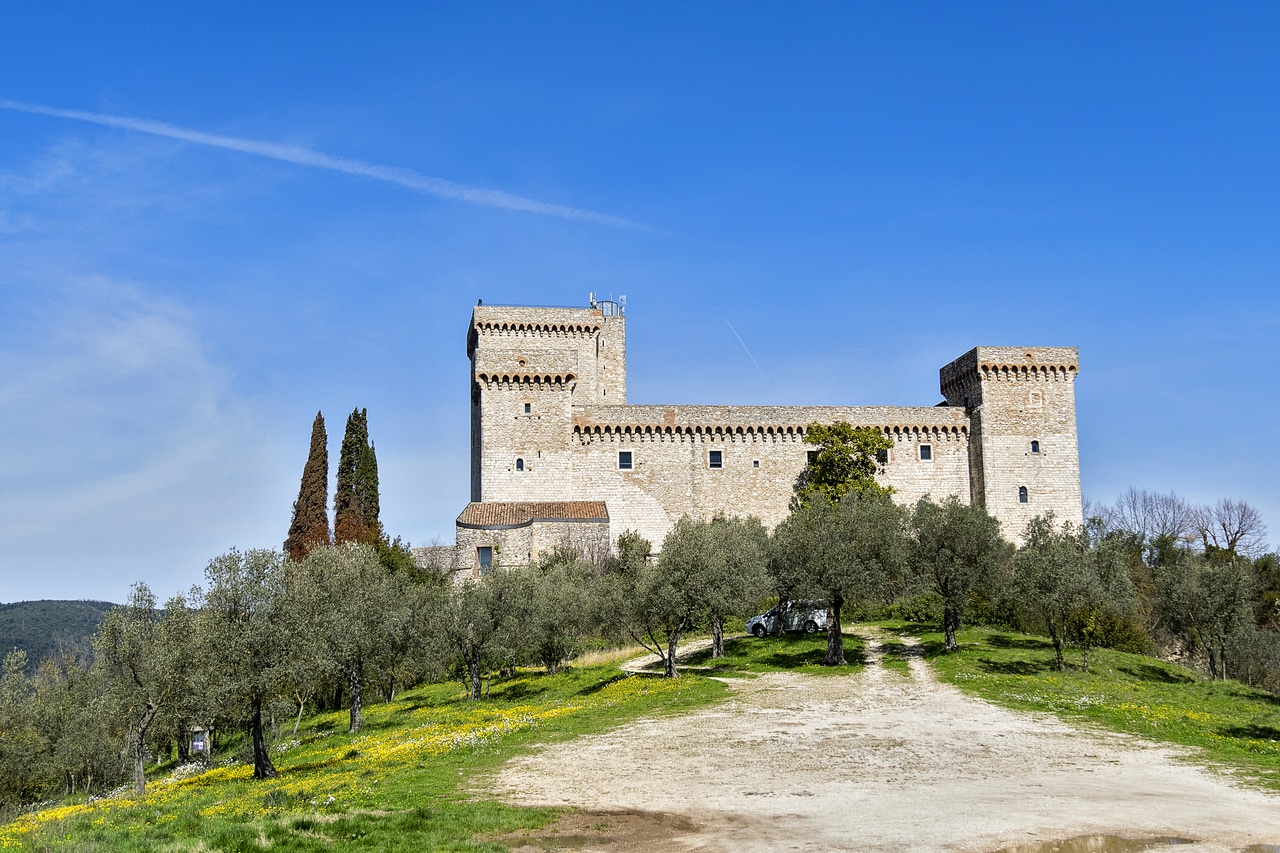The Rocca di Albornoz is an imposing castle located on the highest peak of the medieval village of Narni, in Umbria. Built in 1367 by Cardinal Egidio Albornoz, the fortress had a strategic position to restore the security and domination of the Papal States.
From its elevated position, the Rocca di Albornoz could dominate the main roads and the underlying town. In 1378 the works were completed and the result was a fortress with essential lines designed to be impregnable. However, in the following years, the fortress suffered numerous attacks, including that of the Lanzichenecchi in 1527, which devastated it in large part.
A medieval garden
Once you have crossed the first entrance of the Rocca di Albornoz, you can visit a Hortus Conclusus, a typical medieval garden divided into two sections: the Ortofrutteto and the Giardino dei Semplici. In the first are cultivated plants that in medieval times had a food destination, such as bitter orange, onion, garlic, cordial, cauliflower, cabbage and parsnip, just to name a few. The Garden of the Simple, instead, houses twelve raised flower beds in which are cultivated as many species of simplicia medicamenta. Every single plant corresponds to a zodiac sign.
The Museum of Arts and Urban Expressions
On the first floor of the Rocca di Albornoz is housed the SAM (Street Art Museum) – Museum of Arts and Urban Expressions. Inside you can retrace the history of street art through materials and documents of some of the most important international exponents such as Keith Harring, Jean-Michell Basquiat, Banksy, Blue Vhils, Obey, Seth, Kaws, Invader, Sten & Lex and many others. Among the names in the collection there are also some works by Giacomo Balla, Tullio Crali, Giulio Turcato, Mario Schifano, Gastone Novelli, Mimmo Rotella and Gianfranco Baruchello.
A complete cultural experience
The Rocca di Albornoz is an ideal destination for lovers of history and art. The visit to the medieval fortress offers the opportunity to immerse yourself in a suggestive atmosphere and to discover the wonders of the past. In addition, the presence of the medieval garden and the Museum of Arts and Urban Expressions make the cultural experience complete and engaging for all visitors.
narni@archeoares.it



